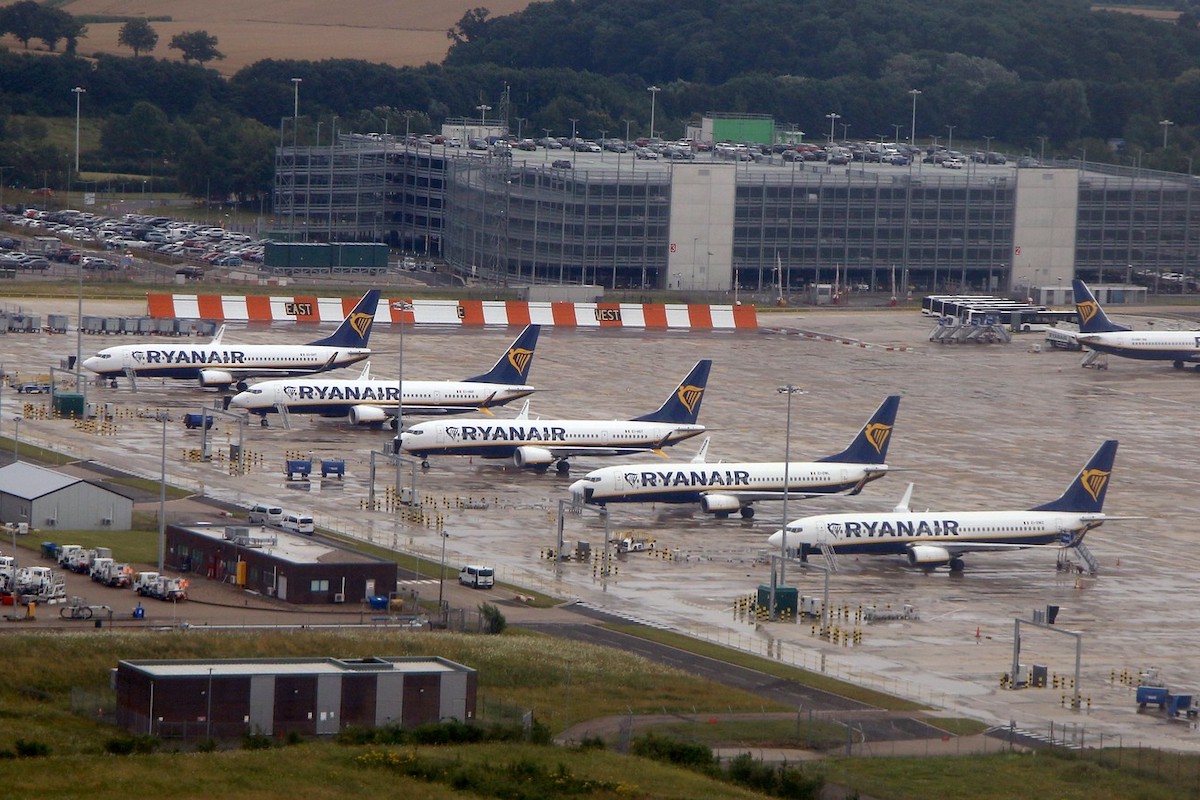Living up to its longtime status as one of the world’s most profitable airlines, Ryanair on Monday reported a 35% operating margin for the July-to-September quarter. This was highest among any airline that’s reported for the period so far. Revenues surged 23% from the same quarter a year ago, lifted by a 14% jump in average fares.
Extraordinary summertime profits are hardly abnormal for Europe’s largest lost-cost airline. A year ago, Ryanair’s operating margin was in fact a bit higher. Four years ago, before Covid, its figure was just a bit lower. Ryanair does often lose money during the slowest months of winter but not nearly enough to outweigh the profits it generates most of the year. For the last four quarters, its operating margins were positive 7% (October to December), negative 12% (January to March), positive 19% (April to June), and — as mentioned above — positive 35% (July to September).
Though cautious about consumer sentiment and geopolitical unrest, management expects the strong revenue environment to continue. A big reason is the supply-side frustration many of its rivals are facing, including all the flying they’re losing due to required inspections on Pratt & Whitney’s geared turbofan engines (GTFs). Wizz Air, with a similar ultra-low-cost business model as Ryanair, is among the most affected. Lufthansa, IAG, and Turkish Airlines are others flying GTF engines. Ryanair adds that this engine issue is congesting maintenance and repair shops, further tightening aircraft availability. That’s driving up aircraft lease rates and, in turn, amplifying Ryanair’s aircraft cost advantage.
Despite the many planes it’s buying from Boeing, Ryanair expects to be “a debt-free company” in the next two years. Most other European airlines, it said, “have very significant net debt positions,” which implies higher financing costs as interest rates rise. Ryanair can largely pay for its planes with all the cash it generates from its business. It does not need to borrow.
CEO Michael O’Leary, during the airline’s earnings call with analysts, also reiterated his expectation that Europe will continue to see consolidation. He spoke of Lufthansa’s moves on ITA, Air France-KLM’s moves on SAS, and growing interest in TAP Air Portugal. Ultimately, O’Leary says, Europe will be left with just four main airline groups: Ryanair and the intercontinental Big Three (Lufthansa, IAG, and Air France-KLM). Unmentioned were low-cost rivals Wizz Air and EasyJet.
Ryanair’s impressive record of success stems from multiple factors. One is its close relationship with Boeing, giving it access to preferred pricing. The immense scale of its operation and its investment-grade credit rating certainly help. It’s a leader in generating revenues from ancillary sources like bag fees and inflight sales. It’s relentless about keeping costs low. To a much greater degree than U.S. airlines, European airlines can negotiate costs with individual airports, something Ryanair does aggressively. Though many of its workers are now organized, they’re represented by a disparate collection of local unions — not a powerful national union like say, the Air Line Pilots Association (ALPA). This helps it secure more flexible work rules and adjust its headcount seasonally by, for example, contracting pilots and cabin crew via third-party staffing agencies.
Perhaps less recognized are the fruits of Ryanair’s ultra-shorthaul network. Low-cost carriers are often tempted to fly longer stage lengths because, well, it does help lower unit costs. But more often than not, it lowers unit revenues even more. Southwest for most of its history earned outsized profit margins by sticking to short routes. Ryanair does the same. Wizz Air, interestingly, is increasing its stage length quite significantly as it adds more Middle Eastern flying. EasyJet, for its part, has in recent years pursued a business model that’s more accepting of higher costs, in hopes of securing higher revenue, i.e., flying from costlier airports like Amsterdam and London Gatwick where it’s amassed hard-to-get slots.
Importantly, Ryanair enjoys a commanding market position in many of Europe’s largest airline markets. It’s the leader by capacity in Italy, where it says domestic routes are currently performing exceptionally well. Italy is in fact Ryanair’s largest country market. It’s also number one in Spain, Poland, and Ireland. It’s number two in the UK.
Ten years from now, Ryanair targets 300 million passengers, which is roughly triple what Atlanta’s airport handles each year (Atlanta’s airport is the world’s busiest). In its current fiscal year that ends in March, Ryanair expects to carry about 184 million passengers. It plans to grow in markets where others retreat, as well at airports that offer it attractive pricing. This winter, it will open six new bases: Athens, Belfast, Copenhagen, Girona, Lanzarote, and Tenerife. And last week, it announced it will pay a regular shareholder dividend for the first time.





